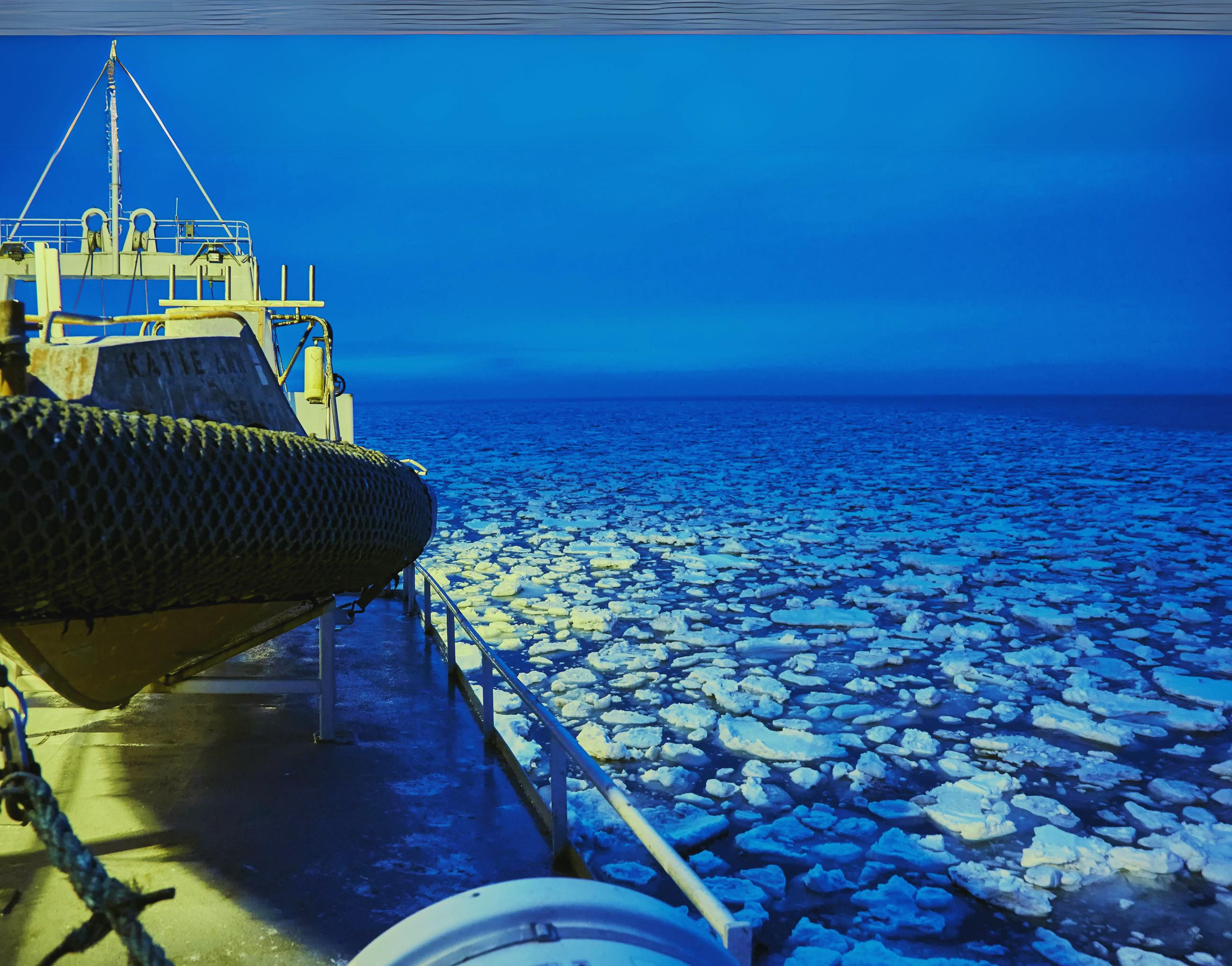
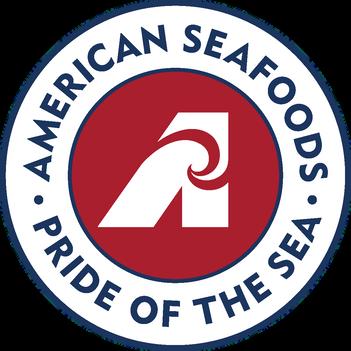
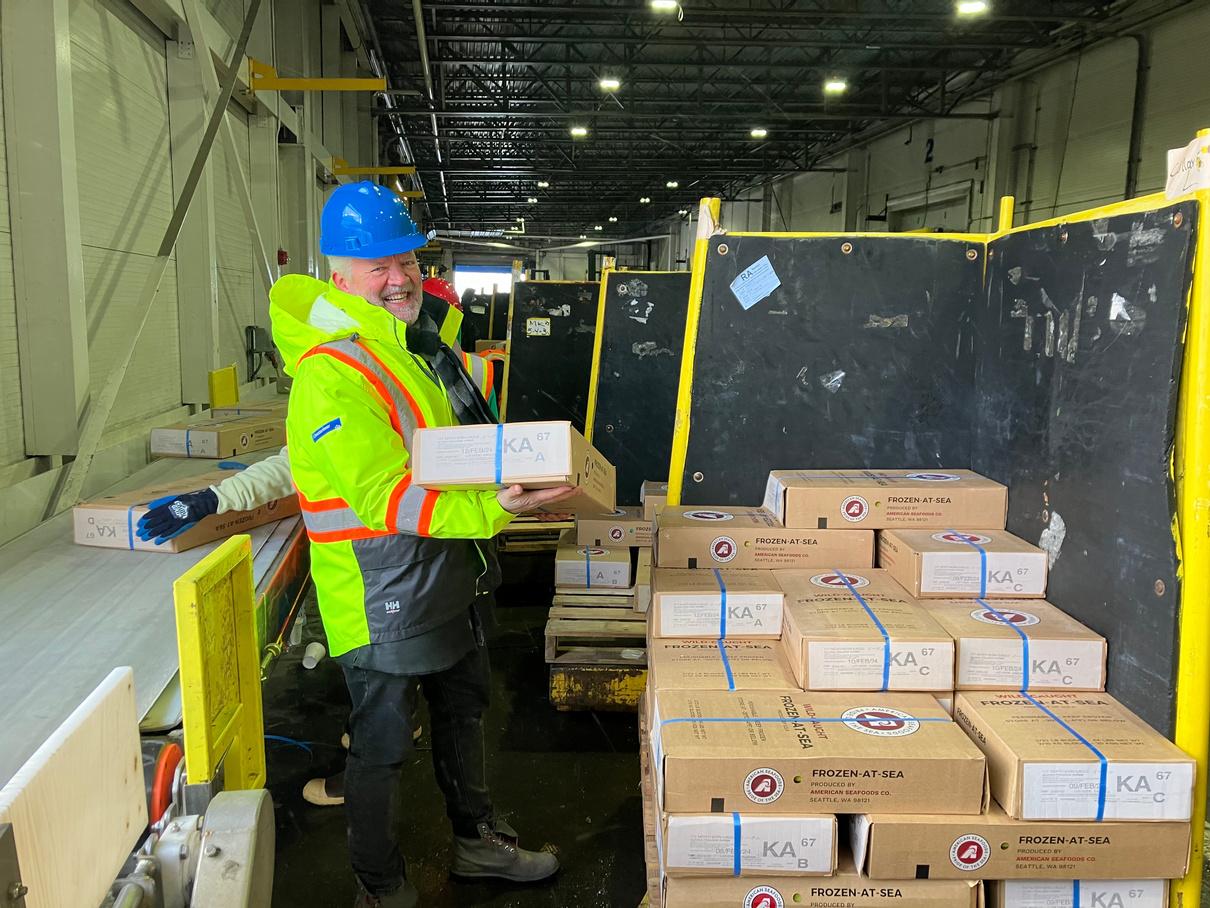




merican Seafoods’ rt, we seek to enhance ustainability initiatives orting them publicly. Our which are outlined below ghout this report
est at-sea processors of ild Pacific hake, the of paramount
s. They are managed by rigorous science-based processes, which set conservative catch limits to remove only a fraction of healthy biomass. Our catch is 100% monitored by government-mandated and trained observers, and also 100% third-party certified and fully traceable from our vessels all the way to final customer We constantly strive to reduce our incidental catch, and in 2023, 99% of our Alaska pollock catch was our intended target species.
In 2023, we also continued to enhance our carbon accounting mechanisms and completed our first comprehensive Scope 3 analysis. This produced the most granular greenhouse gas (GHG) inventory in company history, which we will now use to guide efforts to reduce emissions This will include everything from evaluating fuel efficiency technologies to scrutinizing procurement and logistics processes and researching alternatives to fossil diesel (the biggest component of our footprint).
We are also implementing new programs to ensure we manage our waste more responsibly This includes a new focus on garbage created during fishing operations and repair and maintenance activities, as well as constantly pressure-testing the delicate balance between using sufficient materials to keep our products fresh and safe while minimizing unnecessary packaging. We will continue our industry-leading net recycling program, which not only includes our end-of-life fishing gear but also the ghost gear that we collect during fishing operations.
Our boats don’t operate without quality crew, which is why we spend so much time, money and effort to recruit, train, treat and retain the best talent in our industry. That means transparent and generous pay and benefits, an unwavering commitment to safety training and career advancement opportunities, and the best medical care possible before, during, and after the fishing season.
Finally, we continue to take pride in our multipronged giving approach. This focuses on on-demand financial support for Western Alaska communities in need, leadership of and product donations to SeaShare, the largest provider of seafood to America’s food banks, and our longstanding commitment to fostering scientific research and career development at Alaskan academic institutions.
Taken together, these help us deliver more than a billion servings of sustainable, healthy and affordable protein to global markets every year
Onward and upward,
Einar Gustafsson CEO
Our commitment to sustainability is not just a choice, but a mandate. The future of our business hinges on thriving oceans. Together, we can set a sustainable course for a healthier planet and more responsible food production.
-Einar Gustafsson
Maintained 100% third-party eco-certification for all American Seafoods catch
Produced 354,037 gallons of fish oil biodiesel, avoiding 227 metric tons of CO2-e emissions
Completed the company ’ s first Scope 3 greenhouse gas inventory
Expanded our plastic and packaging footprint to include all operational waste
Recycled over 86,000 lbs (39 metric tons) of end-of-life & recovered ghost fishing gear
Enhanced Fit-for-Duty program reduced illness-related costs by 21%
Donated more than $525,000 to Alaska communities, food banks and academic institutions


American Seafoods Company (ASC) is the main division of American Seafoods Group LLC (ASG). ASC is one of the world’s largest at-sea processors of wild Alaska pollock and wild Pacific hake, which are caught on our seven wholly-owned and operated catcher-processor vessels Each can produce up to 150 metric tons daily of frozen fillets, surimi and roe, along with additional fishmeal and oil made from processing byproducts. This means a track record of 100% utilization for more than two decades. These products are distributed to customers worldwide by preferred partners Kloosterboer International Forwarding and Alaska Reefer Management via refrigerated cargo ships, trucks and rail.


We adhere to a myriad of local, state and federal regulatory and legal frameworks. Our fisheries management is overseen by the National Oceanic and Atmospheric Administration (NOAA) in accordance with the Magnuson-Stevens Fishery Conservation and Management Act Individual fishery regulations are administered by the North Pacific & Pacific Fishery Management Councils, along with the Pacific Whiting Treaty with Canada (for Pacific hake) For vessel operations and crew safety, we follow guidelines set forth by the U.S. Coast Guard, U.S. Environmental Protection Agency and Occupational Safety & Health Administration. Finally, standards set by the U.S. Food and Drug Administration and the U.S. Department of Commerce ensure our products are of the highest food safety and quality.
Furthermore, ASC is a member of the following trade associations:
At-Sea Processors Association
Genuine Alaska Pollock Producers
Pollock Conservation Cooperative
Pacific Whiting Conservation Cooperative
National Fisheries Institute
Alaska Seafoods Marketing Institute
Wild Alaska Sole Association
IFFO - The Marine Ingredients Organisation
Our sustainability strategy and initiatives are overseen by the Chief Sustainability Officer, with input and approval from our owners, the Board of Directors, the Chief Executive Officer, and the senior executive team. This includes setting short-term goals and targets on an annual basis, along with periodic reviews of longer-term initiatives.


Our sustainability report is now published annually and covers our activities for the most recent calendar year (in this case, January to December 2023). Where quantitative data are available, we publish a minimum of a three-year time series to facilitate comparison of our performance across years.
This report is also prepared in reference to the Global Reporting Initiative (GRI) standard and describes our efforts on a suite of material topics outlined by the sector standard for Agriculture, Aquaculture and Fishing Individual disclosures can be found in the GRI content index









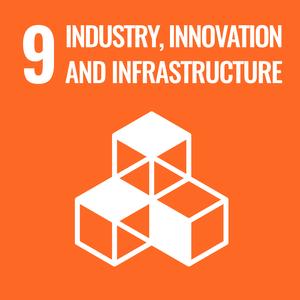

We are fortunate to fish in some of the most sustainable fisheries on the planet. Our fishing operations occur entirely within the federal waters of the U.S. Exclusive Economic Zone in the Eastern Bering Sea and the North Pacific Ocean (primarily FAO Area 67). Our seven catcherprocessors catch our own quota, in addition to quota leased from other fishing companies and Alaskan community development organizations.
Wild Alaska pollock and wild Pacific hake comprise almost 95% of our annual landings Alaska pollock is managed by NOAA Fisheries and the North Pacific Fishery Management Council, whereas Pacific hake is jointly managed by the U.S. and Canadian governments - and in the U.S. the Pacific Fishery Management Council. In both cases, government scientists review scientific information every year from a variety of sources - including government-funded acoustic and trawl surveys, independent observer sampling and fishery catch information - to assess the health of each stock and make recommendations for catch limits in the upcoming season. The Councils then translate this science into conservative harvest levels to ensure overfishing does not occur In most years, the ‘exploitation rate’ in both fisheries - i e the proportion of catch to total adult biomass - is routinely below 15%, meaning 85% of the population is left in the water to grow and reproduce.


More information on the management and assessment of these fisheries can be found at: American Fisheries Act Pollock Fisheries Management in Alaska Pacific Hake/Whiting Treaty
Sometimes called non-target catch or bycatch, incidental catch is one of the primary drivers of where and how we fish As detailed in our 2022 Sustainability Report, we employ several approaches to minimize our incidental catch as much as possible - including everything from onboard government-trained observers and underwater camera technology to net modifications and fleet-coordinated ‘hotspot avoidance.’
It’s worth noting that incidental catch can be broken down into several categories:
Retained: managed species that we are allowed to keep and have marketable value (e g Pacific cod)
Discarded: species that must be discarded after a certain amount has been caught, or species with no marketable value (e.g. jellies)
Prohibited Species Catch (PSC): managed species with strict limits that we are not allowed to keep (e g chinook salmon)
In 2023 we achieved a 99% target catch rate in the Alaska pollock fishery and a 96% target catch rate in the Pacific hake fishery A further breakdown of this performance can be found below, and our sector-wide incidental catch performance can also be seen in the Pollock Conservation Cooperative’s annual report to the North Pacific Fishery Management Council.
The combination of the health of our target stocks, minimal ecosystem impacts and sciencebased management systems have also been recognized by the world’s leading third-party ecocertification programs. All fisheries that ASC operates in are independently certified by both the Marine Stewardship Council and the Alaska Responsible Fishery Management program. These certifications both require a standalone chain of custody standard, through which we provide a suite of key data elements, including but not limited to: unique company, product and vessel identifiers; trip and capture dates; gear type, catch area and species name; ecolabel certificate number and export authorization codes.









More than 75% of our annual catch is from the Eastern Bering Sea, one of the most productive fishing areas on Earth. It is also experiencing several climate-induced shifts as a result of warming temperatures We have already seen the changes in this unique ecosystem and know that more will come Wherever possible, we will work to minimize the uncertainty that this introduces for American Seafoods, as well as those that rely on it for food, employment and cultural significance. 1

While we can’t fully anticipate all the changes to expect, we know that they are coming and must adapt nonetheless. We collaborate closely with fishery managers, government and academic scientists and our industry colleagues to ensure resilient and dynamic operational and management systems are in place for all environmental conditions
As we try to better understand and manage our climate-related exposure, we also recognize our responsibility to track our carbon footprint and the need to move towards less carbonintensive operations. We have invested heavily over the last two decades in every manner of fuel efficient technology aboard our vessels, and in the last two years to enhance our carbon accounting capabilities These will ultimately form the basis for ASC’s long-term decarbonization goals
Our corporate GHG inventory is calculated according to the Greenhouse Gas Protocol (GHG), up to the point of product handoff to our customers It measures the emissions resulting from the production and sale of goods, along with terminal and freight services and corporate expenses. Our breakdown by Scope is as follows:
Scope 1 (Direct emissions): fishing fuel, ocean cargo fuel, fish oil burned as fuel, forklift fuel, backup generator fuel
Scope 2 (Indirect emissions): utilities for ASC offices (4), warehouses (2) and cold stores (1)
Scope 3 (Upstream and downstream emissions)
Category 1 (Purchased goods & services) - groceries, surimi additives, packaging
Category 2 (Capital goods) - capital improvements to vessels
Category 4 (Upstream transportation & distribution) - third-party cold storage,ocean cargo fuel, surface freight (truck, rail and air)
Category 5 (Waste generated in operations) - operational waste
Category 6 (Travel) - corporate and crew air travel, car rentals and hotels
Category 7 (Employee commuting)
Category 12 (End-of-life treatment of sold products) - packaging waste




Notable changes in our inventory in 2023 included:
The purchase and operation of a new vessel (American Empress II)
A 17% increase in available fishing quota (and hence catch)
A corresponding increase in fishing fuel, additives, packaging and waste
Shifting company-controlled ocean cargo fuel from Scope 3 to Scope 1
Increased trucking for North American cargo
Longer ocean cargo transits due to global shipping disruptions (e.g. Panama Canal drought)
Activity-based calculations for surface freight versus spend-based calculations in 2021/2
A key factor that enabled us to improve the quality and scope of our GHG inventory was our participation in Climate Corps. Started by Environmental Defense Fund in 2008, this unique program has placed approximately 1700 MBA students with over 650 companies and organizations across the U.S., China and India. Together, they have identified energy savings worth more than $1 6 billion, the equivalent of over 2 2 million metric tons in carbon emissions
Our 2023 Climate Corps fellow spent the summer reviewing previous ASC inventories and helped us devise a comprehensive proto l f t l i bi t S 3 t i

Despite the complexity of our GHG inventory and the concentration in Scope 1 emissions, our carbon intensity remains the lowest for any mainstream animal protein on Earth, and is even lower than several plant-based proteins like tofu. 2





Since ASC operates no shore-based processing facilities, the majority of the waste we generate stems from fishing operations, vessel repair and maintenance activities and product packaging.
We once again worked with the environmental consultancy South Pole to determine the ultimate fate of the consumable materials that ASC uses in everyday business activities and to inform new programs to help manage our waste more responsibly.
Our Scope 1 operational waste and Scope 3 indirect waste (i.e. the packaging of our packaging) are managed under our direct control and handled entirely at three discrete locations in the United States where we offload fish and service our vessels:
Seattle, Washington - strong capture and recycling infrastructure
Bellingham, Washington - strong capture but limited recycling infrastructure
Dutch Harbor/Unalaska, Alaska - strong capture but no recycling infrastructure
This waste is captured by existing waste management infrastructure, with little to no leakage to the surrounding environment.



On the other hand, our Scope 2 product packaging is by far the greatest contributor to our total waste footprint - and the disposal responsibility for these materials ultimately lies with our end customers. Not surprisingly, waste management practices vary greatly around the world, and we can see that reflected in the capture and recycling rates for fiber, plastic and mixed material packaging in our three main end markets.
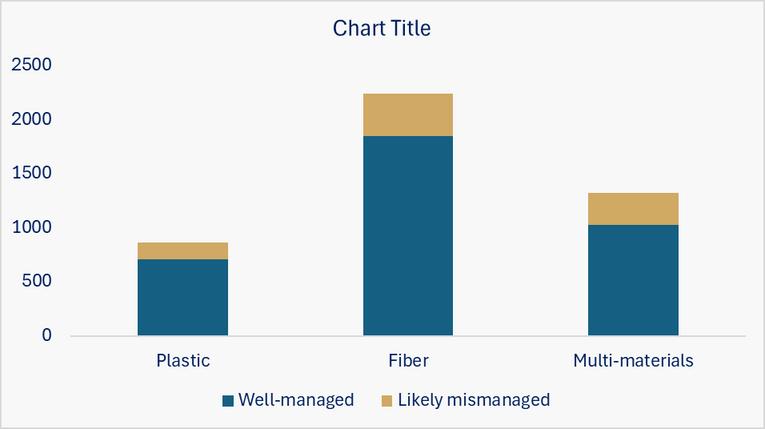
Packaging Waste (Scope 2)
Some key changes in our packaging and waste footprint in 2023 included:

The addition of operational waste from fishing operations and repair/maintenance activities
Switching to Forest Stewardship Council certified fiber for all cardboard fillet block and surimi boxes
Cataloging the packaging recycling efforts of our customers
Higher product volume delivered to countries with better capture and recycling practices
In 2024, we will focus on diverting more operational waste into verifiable recycling streams and working with key customers to scrutinize redundant packaging that can be minimized or removed without sacrificing product quality and food safety
When our nets reach the end of their usable life, our industry-leading net recycling program springs into action! Virtually every component of these vital pieces of equipment can be salvaged and repurposed, from the chain and steel cables to the variety of plastics used in the lines and mesh. Additionally, we encounter tons of other vessels’ lost gear (i.e. ghost gear) throughout the season, which we are required by law to collect and dispose of properly


and design new nets that are easier to break down and repurpose when they can no longer be fished. More on that below!
CIRCULARITY PARTNERSHIP



We successfully demonstrated that polypropylene and high-density polyethylene (HDPE) from our end-of-life fishing gear could be recycled and remanufactured into serving trays for use in quick-service restaurants. AION and ASC subsequently expanded our collaboration to include additional types of operational waste and product packaging, including sorting baskets and fishmeal bags. This created new and valuable resource loops with documented reductions of plastic waste and CO emissions. 2

Joe Reed joined American Seafoods in 2022 to oversee our warehouse operations in Dutch Harbor He has the crucial responsibility of making sure our vessels are fully supplied when they are fishing in the Bering Sea - not an easy task! As a year-round resident of Unalaska, Joe knows first-hand the importance of the fishing industry to this remote community and is committed to minimizing our impact on the island’s limited resources Joe has created a new process for sorting our operational waste during the fishing season and containerizing recyclable fiber and film for shipment south to Seattle where it can be processed properly and sold into secondary markets
This not only saves the company on garbage costs, but more importantly lessens the amount of material that we send to Unalaska’s strained landfill by up to 25%. When Joe isn’t shrinking ASC’s waste footprint, he can also be found rigging a homemade baler to compact our recyclables, or even doing a beach cleanup in Summer Bay His initiative is what sustainability at American Seafoods is all about.

Vessel crew comprise 90% of ASC employees, and they perform a wide range of duties to operate and maintain our vessels in rough seas and remote environments. With up to 130 people on each vessel, our captains, deckhands, engineers, production managers, factory technicians, electricians, cooks, housekeepers and processors must all work together to catch and process our fishing quota as quickly, safely and sustainably as possible


All ASC vessel employees participate in our ‘ crew share’ program on a seasonal or annual basis. Crew share is calculated as a percentage of the total market value of the catch and is scaled according to each employee’s position and seniority Everyone is made aware of their share value before going to sea Irrespective of their designation and pay structure, all vessel crew have a transparent written contract and must be at least 18 years of age and legal to work in the U.S. They receive complimentary room, board and medical care, and are offered health insurance and employer-sponsored retirement benefits after a minimum amount of service time. Combined with high-speed internet and streaming services on board, these are some of the many reasons that we have one of the highest retention rates in our industry

These practices, along with the safety protocols outlined below, have also been recognized by the FISH Standard for Crew This third-party standard is crafted from the International Labour Organization’s Work In Fishing Convention (No 188), and is the first in the world to certify hiring practices and working conditions for offshore fishing operations. We are proud to be one of the first fleets worldwide to receive this certification.
Crew safety and well-being is a core company value and our top priority. We believe the best incident is one that didn’t happen. As a result, we focus resources on prevention and invest heavily in training and support programs for all crew that prepare them for the rigorous demands of their jobs We have a robust Occupational Health and Safety Management system that meets or exceeds all regulatory requirements and incorporates best practices from around the world. Our preventative training and care programs span three interconnected areas:
Proactive, comprehensive and continuous safety training for all crew
Shoreside and onboard safety professionals and resources to identify and mitigate safety concerns
Preventative and on-demand medical care

Our training program is based on the American Seafoods Knowledge Academy (ASKA) - a learning management system that allows the crew to take new hire and annual training on a variety of topics anywhere with an internet connection. The courses are also available onboard the vessels so that all crew can take additional training - even while at sea. ASKA also gives us the ability to push out messages or new trainings - e.g. should an emerging issue require timely education. In-person safety refreshers are conducted twice per year during pre-departure crew orientations, and are supplemented by individual emergency orientation, onboard safety briefings and emergency drills conducted at least monthly while the vessel is in operation.
When it comes to identifying and mitigating safety issues on board, our shoreside safety team works with the vessel crew to facilitate hazard identification, risk assessment and incident investigation. We employ industryleading software that fosters cloud-based collaboration on audits and investigations. This system also encourages the creation of safety action items to help resolve any issues that are discovered onboard.

If an issue is identified during an audit, an ‘action item’ is created and crew members and shoreside support discuss the issue, develop mitigation and resolution strategies and track the action item to its ultimate resolution. In 2023, our Vessel Safety Officers conducted 247 audits of various types and generated 636 action items - helping us prevent incidents before they occurred.
Our crew are also empowered to speak up about any safety or health concerns they witness to either their supervisor, bridge officers or vessel or shoreside safety staff We provide a Near Miss/Hazard Reporting system on every computer throughout every ship to allow anonymous reporting that automatically goes to both the vessel safety officer and the corporate safety department for follow-up.
Finally, ASC’s shoreside medical team is composed of a physician Board-certified in occupational medicine, a medical operations manager and a third-party contractor that provides paramedics and 24/7 on-call telemedicine with emergency physicians who are familiar with our remote working conditions and the needs of our diverse crew. Our bridge crew (e.g. captains, mates, pursers) have also completed USCG-approved Medical Person in Charge training and undergo regular refreshers to keep them current with IMO standards. We believe that this depth of knowledge, resources and onboard skills, combined with our robust medical supplies and equipment, help assure that our crew receive best-in-class onboard care
Medical examination has been part of seafaring for more than 100 years. In 1997, the International Labour Organization and World Health Organization published the first international guidelines on the medical examination of seafarers, and for the past decade ASC has developed and refined its ‘Fit for Duty’ program (FFD) in accordance Although not federally mandated, we believe FFDs are of great value and therefore require biennial FFDs for all non-Coast Guard credentialed crew prior to working at sea.

ber’s ability to safely perform routine duties and emergency ensures that the crewmember is not suffering from any condition likely to be aggravated by service at sea. Finally, it wmember to address their underlying health issues – such as c. - and improve over time.

ners of the globe, with many originating from socio-economically o medical care for them may be limited or sporadic. If they fail the initial FFD assessment, they are encouraged to seek medical attention, resolve any issues and provide documentation. While this process successfully clears many for duty, in certain instances, it may not be as swift as desired. Nonetheless, our FFD program prioritizes support rather than elimination.
Together with our internal medical team, on-board paramedics and shoreside medical command, we are proud of the proactive medical support and state-of-the-art medical resources we are able to provide to our crewmembers to ensure safe, healthy and gainful employment! We are already seeing: 1) improved health parameters onboard; 2) more establishment of onshore care between fishing seasons; 3) many becoming cleared for FFD over time; 4) decreased crew turnover; 5) early signs that illness-related expenses are dropping (-21% for 2023 vs. 2022). This is powerful evidence that healthy employees make for a healthy company!



American Seafoods has invested in targeted philanthropic endeavors for the last 30 years. Whether it’s on-demand funds for remote communities, providing high-quality sustainable seafood to national food banks, enabling cutting-edge research or subsidizing safety training for local fishermen, we understand the need to support those that support us.
Twice per year, American Seafoods solicits grant requests from across Western Alaska These funds are provided youth programs, school lu
In 2023, American Se organizations:


Grant recipients: SAF
Alakanuk Native Corporation, Community of St Paul Island Tribal Government, Bristol Bay Regional Food Bank, Brother Francis Shelter, Chaputnguaq Schools, Chefornak Schools, Chefornak Traditional Council, Chevak Search & Rescue, Chief Paul Memorial School, City of Chefornak, City of Goodnews Bay, City of Mountain Village, City of Saint Paul, Eek Moravian Church, Emmonak Corporation, Grayling Tribal Food Bank, Hooper Bay School, Hospice & Palliative Care of Kodiak, Humane Society of Kodiak, Kashunamiut School District, Kodiak 4-H, Kodiak Kingfishers, Kodiak Maritime Museum, Kodiak Women's Resource and Crisis Center, Napakiak Moravian Church, Napakiak Search and Rescue, Native Village of Elim, Native Village of Kongiganak, Native Village of Napaskiak, Nuniwarmiut School, Opt-In Kiana, Pribilof School District, Safe And Fear Free Environment Inc., Seattle Fishermen’s Memorial, Senior Citizens of Kodiak, St. Paul Public School, Tribal Government Of St Paul, Tuntutuliak Moravian Church, Unalaska Senior Citizens, Village of Solomon

As part of our membership in the Pollock Conservation Cooperative, ASC provides academic research support to the University of Alaska Fairbanks, Alaska Pacific University and Northwestern Alaska Career and Technical Center In just the last four years, we have cofunded a broad spectrum of scientific projects, including:
Bering Sea Pacific herring genetics
Environmental drivers of snow crab abundance
Marine drivers of parasitic infection in Western Alaskan salmon
Microplastics in remote environments
Reducing chinook salmon bycatch
Reducing killer whale interactions in trawl fisheries
Standardizing fishery survey data from multiple sources
Yukon River chum salmon marine ecology

This local non-profit not only memorializes fishermen that died at sea, but also provides support for their families through scholarships for children who lost a parent. Perhaps even more importantly, the Memorial offers safety seminars, training and outreach to local small vessel fishermen who might otherwise not have access to such programs, in order to prevent future tragedies. In addition to financial contributions over the years, our dedicated safety team and office staff contribute countless volunteer hours to the Memorial every year.


SeaShare is the only nonprofit organization dedicated to providing first -run seafood to the U.S. food bank network, having distributed more than 260 million servings since 1994. As a founding member and major donor, American Seafoods helps SeaShare achieve its mission to improve the nutrition provided by food banks and feeding centers across the U.S.
To date, we have donated 20 million seafood servings to SeaShare

Our sustainability program is as much about future ambitions as it is past successes (and challenges!). In 2024 our sights are set on a few key areas:
With every GHG inventory comes opportunities for improvement. In 2024 we will evaluate two key additions to our portfolio: 1) expanding our carbon accounting platform beyond ASC to include our parent company (ASG); and 2) the feasibility of setting a decarbonization goal On the latter, we will do a thorough analysis of the financial, operational and reporting implications o targets in line with the Paris Agreement. disproportionate weight of our Scope 1 extended periods that our vessels are at a hard look at the pros and cons of rene we wait for new engine technologies an come online.

Much of our environmental impact stems from the movement of goods around the world. With every pallet of product or supplies comes an additional amount of shrink wrap, packing straps and protective cardboard - all of which has to be disposed of or recycled By scrutinizing our most common purchases, we can realize significant cost and sustainability savings. For example, this year we switched from 2600 to 3000 product liners per pallet. In the process this one small change will save over 400 wooden pallets, 300 kg of cardboard, 100 kg of plastic wrap and 1600 packing straps Additionally, we now have a process in place to collect and transport these recyclable materials from our fishing operations in Dutch Harbor to recyclers in Seattle. In 2024, our goal is to reduce our waste to landfill by at least 25% (150 metric tons). We will look to institute similar programs in Seattle and Bellingham, as well

Finally, now that we are at ‘net zero ’ for old fishing gear, it is imperative that we recycle retired nets and ghost gear on a rolling basis every year to prevent unnecessary accumulation.
The Global Reporting Initiative provides a suite of reporting standards for how organizations communicate and demonstrate accountability for their impacts on the environment, economy and people The table below contains an index to the general disclosures, sector standards and topic standards that are our material to our company More details on the standards can be found here.

Our vessels produce 100% of their freshwaterincluding ballast water - via reverse osmosis Our effluents are governed by the US Coast Guard and US Environmental Protection Agency and occur in designated offshore areas Link 1 and Link 2 to our National Pollutant Discharge Elimination System (NPDES) permits.
-All products produced on our vessels are manufactured in strict accordance with the U S Food and Drug Administration’s Hazard Analysis Critical Control Point (HACCP) program, per 21 CFR, Sections 123 and 1240
-Each of our vessels is registered with the United States Food and Drug Administration (FDA) under the Food Safety Modernization Act (FSMA) and is in compliance with the Country of Origin Labeling Act per 7 CFR, Part 60, Mandatory Country of Origin Labeling of Fish and Shellfish
-American Seafoods is a voluntary participant in the United States Department of Commerce (USDC)
HACCP Quality Management Program (QMP) and undergoes quarterly audits of all of our vessels for sanitary conditions and regulatory compliance under contract number 100-000-1151.
-All of our vessels are also ‘Approved Establishments’ under the U S Department of Commerce’s Seafood Inspection Program
water discharge-related impacts
Our effluents are governed by the US Coast Guard and US Environmental Protection Agency and occur in designated offshore areas Link 1 and Link 2 to our National Pollutant Discharge Elimination System (NPDES) permits.
401-2 Benefits provided to fulltime employees that are not provided to temporary or parttime employees Our Crew GRI
periods regarding operational changes

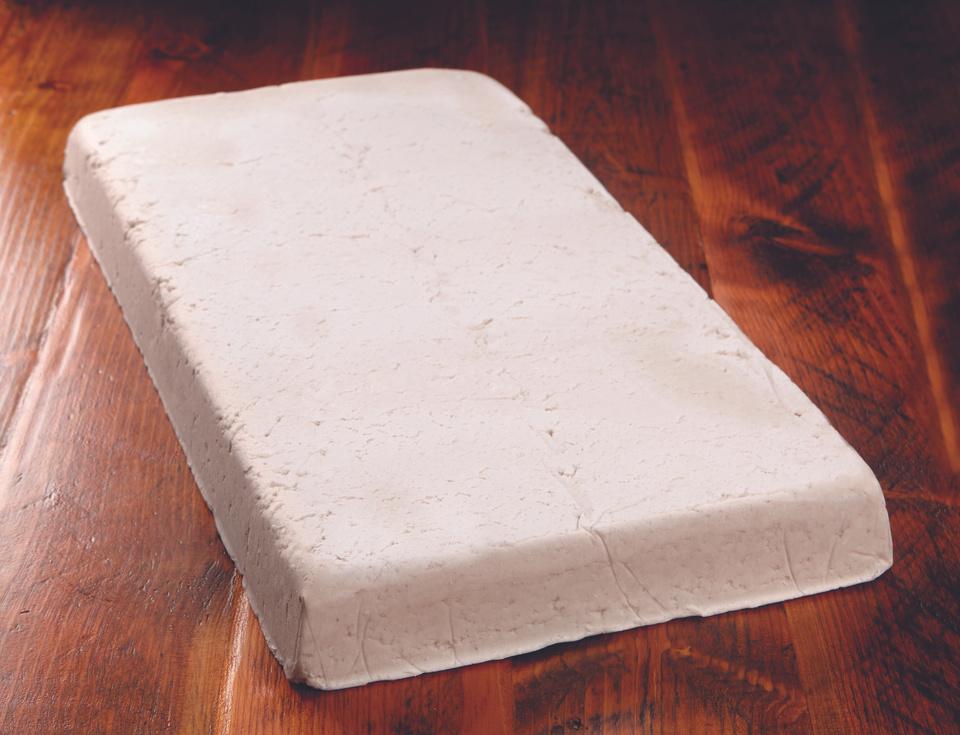
Produced at sea, our fillet blocks are processed at the peak of freshness. Pin Bone Out (PBO), Deep-Skinned (DSK) and Pin Bone In (PBI) whole fillet blocks (belly flaps removed) made from Wild Alaska Pollock and Wild Pacific Hake are frozen within hours of harvest without any use of additives. Compressed frozen blocks provide a consistent variety of portions which can be sold plain, seasoned, or battered and breaded
Our frozen-at-sea surimi blocks are made from whole Alaska Pollock and Pacific Hake fillets. American Seafoods produces a full line of surimi grades, including SA, FA, A, KA, B and RA, using standard surimi ingredients and allnatural options Our surimi blocks provide the highest degree of freshness and functionality.

ASC’s Wild Alaska Pollock Roe is graded and frozen immediately after catch Up to 18 different quality grades are packed and frozen in 7.5-kg blocks. This nutritionally rich, high-quality roe is sold mainly to Asian and European markets where it is further processed into consumer products




Naturally preserved meal made from Alaska Pollock and Pacific Hake is sold as American Seafoods’ ULBA® Fish Meal. With high protein content and superior freshness, this white fish meal is an irreplaceable ingredient for aquaculture and companion animal feeds, meeting high demands for performance, nutrition and palatability.
Our aqua-grade crude fish oil, processed within just a few hours of harvest, is renowned for its high quality and purity. Due to its high nutritional content, fish oil is a prized ingredient for use in aquaculture and companion animal feeds It can also be further refined for human nutrition supplements
We produce at-sea frozen blocks of both whole and headed & gutted Yellowfin Sole These are sold primarily for reprocessing into fillets for sale in retail and foodservice markets across the globe. Yellowfin Sole is also an increasingly popular product in Southeast Asian markets, where it is consumed as a whole fish.
We produce at-sea frozen blocks of headed & gutted Pacific Cod that are graded both by size and weight and by whether the collarbone is left on or removed The main markets for trawl-caught Pacific Cod are the Northeastern US, Southern Europe and Asia. Pacific Cod has a mild, almost sweet flavor with a large-flake texture that makes it a favorite and perennially popular fish for many cultures.
